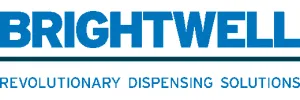News & Insights
Read the latest news from us and our clients across the globe

Posted on 6 April 2016 by adtrak.admin
Fogging and the germ war
Like it or not, we’re fighting a germ war, and always have been. Now though, clients, public and service providers are more aware of the risks, and we have better weapons at our disposal. Ashley White, Commercial and Safety Manager of cleaning and FM services specialist Nviro, demystifies fogging as a sanitisation technique.

Chemical or bio-fogging has been around a long time as a way of sanitising interior spaces in buildings. But what once was a highly specialised (and costly) cleaning technique for clean rooms, hospitals and the food processing sector is now seeping into the mainstream.
There are various factors spreading its appeal. As in other areas of cleaning, the progress made in developing new chemical treatments has been remarkable. Historically, various chemicals including formaldehyde, phenol-based agents and compounds of ammonium have been used in fogging. Many had not been properly tested for potential effects on human health, some were toxic and others even damaged materials they came into contact with.
Advances in biocidal technology have bypassed these problems so that bio-fogging is now known to be both safe and effective. In practical terms, not only is it now far more straightforward to carry out fogging, we can demonstrate how effective it is through simple before and after tests, using ATP monitors (see below).
 The other big factor is the growing demand for infection control and enhanced cleaning services. As a society we are now all too aware of the risks posed by the winter Norovirus vomiting bug, MRSA infections in hospitals, and less regular but potentially lethal swine and bird flu pandemics. At times of heightened risk, hand sanitisers moved from hospital entrances into corporate offices, and are now increasingly commonplace.
The other big factor is the growing demand for infection control and enhanced cleaning services. As a society we are now all too aware of the risks posed by the winter Norovirus vomiting bug, MRSA infections in hospitals, and less regular but potentially lethal swine and bird flu pandemics. At times of heightened risk, hand sanitisers moved from hospital entrances into corporate offices, and are now increasingly commonplace.
Managing these risks falls increasingly on the facilities manager, in particular where they serve large employers. They understand the impact on their business of high levels of sickness, which runs to hundreds of millions of pounds each year in the UK. The employee well-being agenda has focused further attention on how the workplace is serviced, and on the importance of cleaning, indoor air quality and hygiene.
From schools and universities to ferry terminals, premises managers are responding to these higher expectations and their organisations’ duty of care to staff, students, passengers and everyone using their facilities.
As well as the threat of disruption to any organisation and financial loss to business, there is the risk of reputational damage too, especially if the response to an outbreak is slow or ineffectual.
In parallel to these developments, the more enlightened FM and cleaning service providers are expanding and enhancing their capabilities to support FMs and their goals, including more healthy workplaces.
So what is fogging and how does it work?
Fogging is somewhat misleading as a term as the most common form does not create a fog as such. Chemical or wet fogging produces a fine mist, whereas dry fogging – more often used where there’s a lot of electrical equipment – does fill the room being treated with smoke.
However both methods operate on the same principles.
The biocide particles in the mist or fog are so small that they remain suspended in the air long enough to kill airborne viruses and bacteria. The biocide also eliminates pathogens on surfaces, including ceilings and walls as well as furniture and floors.
An advantage with fogging is that the sanitising agent reaches areas that may be difficult to clean with other techniques. Penetration into some nooks and crannies may be limited by obstacles, but in most cases it’s not necessary to move furniture or equipment around before or during the cleaning process.
Whereas previously, the chemicals used in fogging could adversely affect materials such as plastic, fabrics and metal – causing corrosion over time – this is no longer a concern.
Is fogging practicable and safe?
The fogging process is rapid and efficient. FMs will probably be aware that formerly, an area might be sealed off for days at a time for fogging. Now sanitisation takes a matter of minutes. To avoid disruption and risk of allergic reactions, areas do need to be clear of people. So it should be done outside of working or opening hours, overnight for example.
While the biocide is not toxic, there is always a risk of allergic or other reactions for those present during the fogging operation. A responsible contractor will ensure staff wear the recommended PPE for the agent used.
We favour a water-based anti-microbial that is non-hazardous, clear and odourless, non-corrosive, harmless to the environment and requires no rinsing. No special requirements apply either for protection against spillages or during handling or storage.
But can it still be effective?
An effective biocide will target a wide spectrum of microbes and the results of testing bear out the claims that chemical fogging is capable of eliminating all pathogens.
For example, we recommend a solution using four different biocides so that a bacterium with resistance to one agent will be eliminated by the others. This biocide is effective against a wide range of microbes, including E. coli, MRSA, C. difficile, listeria, salmonella and Legionella pneumophilia.
Of course, the mist must reach the target areas and in sufficient quantities to sterilise surfaces. Evidence strips are used for this purpose.
And the evidence from our monitoring is that fogging gets to work immediately and the benefits are surprisingly enduring.
How do you test?
Cleaning standards should always be monitored. When it comes to sanitisation, performance needs to be measured scientifically. It’s now relatively simple to do this by testing for microbes using a hand-held monitor that measures ATP (adenosine triphosphate). Moreover, FMs can share this information with senior managers, including those responsible for HR and occupational health, to justify cleaning spend.
The ATP molecule is found in and around living cells. It’s used as a direct measure of biological concentrations and health. An aluminometer gives us a reliable indication of ATP levels (see box).
| TESTING IS AS EASY AS ATP
A luminometer uses a naturally occurring firefly enzyme called luciferase that reacts with ATP. The light produced by this reaction is directly proportional to the amount of ATP present in the sample. In laymen’s terms, this means we can accurately gauge the concentration of living cells on a surface. Without sending off a swab to a microbiologist for analysis, you can’t tell what these cells are, and most will be harmless. For example, it is not unusual for a human hand to produce a count of between 500 and 800. But this form of monitoring is a far more reliable indicator of cleanliness than relying on visual inspections, smell or cleaning task checklists. The steps involved in an affective ATP testing regime are to:
Repeat the ATP tests after fogging and again over several weeks, or months, as appropriate. |
Normal practice is to test for ATP before and after fogging. We have carried out multiple trials at our own offices and at client sites. These have shown a very dramatic decline in ATP counts.
It’s also significant that repeat tests several weeks after fogging indicate that the biocide prevents much of the usual contamination or at least limits the rate at which cultures redevelop. Our tests have shown that the chemical continues to act as an effective bactericide and virucide after application to prevent future outbreaks. Chemical suppliers claim the residual efficacy of a fogging agent can extend into months and longer. But this will depend on exposure to recontamination and other factors.
To give an example, after half the pupils in a community school were struck down with what proved to be the Norovirus, we carried out an extensive fogging programme. ATP testing showed that the treatment had been effective. Subsequent random tests afterwards indicated that counts were still very low – with one exception, a cuddly toy in the infants’ play area. While there was no reason to assume that harmful bacteria were responsible, steam cleaning of the toy was recommended.
So what are the drawbacks of fogging?
We see bio-fogging as a highly effective weapon in our armoury of cleaning techniques, but it’s not a silver bullet.
In the first instance, a thorough cleaning is required in advance of fogging or its impact could be curbed. The biocide vapour needs to make contact with the microorganisms on a surface to kill them. If dirt, debris wet patches or some other material are covering parts of a surface, then these areas may not be sanitised. So we recommend that fogging is carried out in conjunction with a deep clean.
FMs also need to consider measures such as air sanitisers that use UV light and other techniques to decontaminate and deodorise air in washrooms and elsewhere.
Another issue is cost. Fogging is not a cheap option. The chemicals are more expensive than common cleaning solutions. It also requires an investment by the cleansing services provides in fogger machines, ATP meters and in monitoring and training.
But we believe that fogging is cost-effective as a sanitisation technique. Not only is it relatively quick, causing minimal disruption, the results are immediate and the benefits are potentially significant and long-lasting.
When and where is fogging justified?
The most obvious scenario is the response to an infectious outbreak. But given the benefits of sanitisation – and the heavy cost to organisations and people in lost output, disruption and welfare when infection spreads – we recommend having areas fogged twice a year to achieve a good level of protection.
That advice is especially germane where people may be more vulnerable to bacterial or viral infection. This would include the infirm in care homes or children in nurseries, but also other groups, such as university students in halls of residence.
Fogging and other sanitisation measures should also feature in contingency planning for the winter season and other times of heightened risk, such as a swine flu outbreak, which can happen at any time of year.
All of us responsible for managing or cleaning the buildings where people work, study, visit or live need to be prepared to combat a germ attack, preferably by repelling it.
Published in FMUK – March 2016
Experts in Public Relations Services & Communications Management
Our ServicesGenuine industry specialists in cleaning and hygiene, environmental and recycling, and facilities management
Our Sectors












